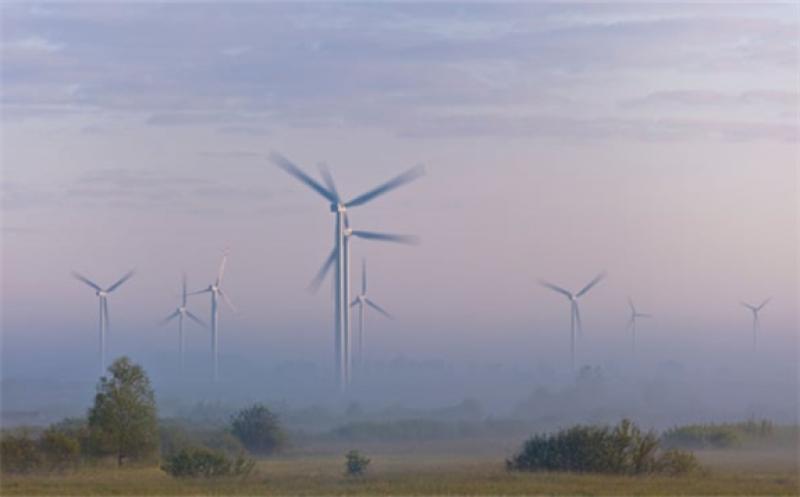The capacity of the EU’s offshore windfarms in the North Sea, the Baltic, the Atlantic, the Mediterranean and the Black Sea will be increased by 250%, under a draft plan drawn up by the European commission.

The move follows Boris Johnson’s announcement this year of his intention to generate enough electricity to power every home in the UK within a decade from the country’s offshore sites.
Both the UK and the EU are seeking to make progress on the target of carbon emission neutrality by 2050 and pioneer potentially rival innovations that will put its industry at the forefront of the growing sector.
The total energy generating capacity in Europe’s seas stands at 23 gigawatts (GW), from 5,047 grid-connected wind turbines across 12 countries, including the UK.
Under a European commission strategy, the 27 EU member states alone would achieve a capacity of 60GW by 2030 and 300GW by 2050, with Germany set to hugely increase its investment in the sector.
According to the leaked paper, the commission “estimates that an installed capacity of 300GW of offshore wind [and around 60GW of ocean energies] by 2050 would be needed in the integrated, greener and climate neutral energy system of 2050.”
The commission writes: “This is feasible for a sector where Europe has gained unrivalled technological, scientific and industrial experience and where strong capacity exists already across the supply chain, from manufacturing to shipping and installation. Nonetheless, it is a very challenging horizon. It means that offshore renewable energy capacity should be multiplied by 25 times by 2050. The investment needed is estimated up to €789bn.”
The UK, which left the EU in January, has the largest amount of offshore wind capacity in Europe, with 45% of all installations. Germany is second with 34%, followed by Denmark (8%), Belgium (7%) and the Netherlands (5%).
The UK, home to the world’s largest windfarms in Walney and Hornsea 1 in the North Sea, is currently investing more in offshore wind than any other country. Walney windfarm generates power for more than 600,000 homes across Cumbria, while Hornsea 1 supports power for over 1m households across the UK.
Over the summer, the German government said it would also increase its current 7.5GW of capacity to 20GW by 2030, with a target of 40GW by 2040.
But the European commission has called for a more “resolute” approach across the bloc. According to a leak of the strategy obtained by the Euractiv news website, the “very challenging” target for new windfarms would come with an expected price tag of €789bn, creating 62,000 jobs in the offshore wind industry.
To fully exploit the technology, the commission wants the EU member states to work across nationals to scale up capacity through so-called hybrid sites of which there is only one example in Europe as it stands.
The Kriegers Flak site, an offshore windfarm located between Germany and Denmark, is also forced to operate under a transitional arrangement due to lack of enabling EU legislation.
The commission strategy, set to be unveiled on Thursday, will call for investment in both classic fixed-bottom turbines and newer floating infrastructure which can be installed in deeper waters.
There is concern that the European countries are failing to invest significantly enough in offshore sites. The strategy paper notes that “nearly half of global offshore wind investment in 2018 took place in China”.
Iván Pineda, director of public affairs at WindEurope, the body representing the off-shore sector, said: “Offshore wind is cheap but requires huge upfront investment. So it’s crucial to minimise the finance costs. And the best way to do that is to ensure windfarms have stable income. It’s very important the strategy recognises this, both for conventional windfarms and the hybrid ones that connect to more than one country.
“We need to rethink how offshore wind is deployed in Europe. Connecting windfarms to more than one country is a logical evolution and crucial step to optimise space at sea, reduce costs of grids, and send electricity where it is needed. The current EU rules put offshore hybrids at a disadvantage against regular offshore wind and interconnector projects.”
This article is reproduced at www.theguardian.com